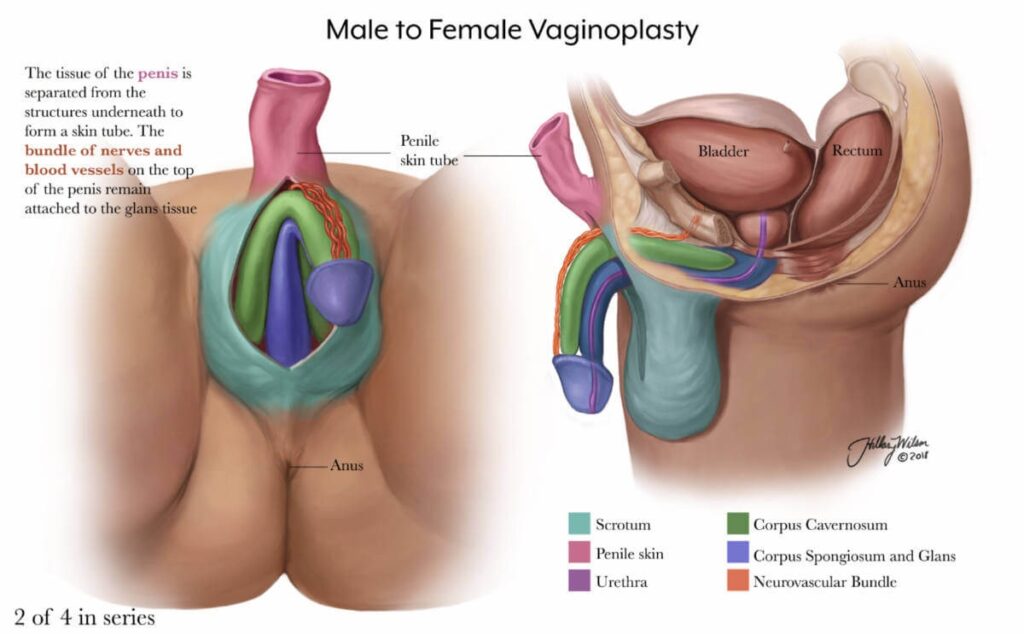
- Definition: Vaginoplasty is a surgical procedure to create, reconstruct, or tighten the vagina, often for gender affirmation, congenital conditions, or post-trauma repair.
- Types: Includes gender-affirming surgery, reconstructive surgery (e.g., for MRKH or cancer), and cosmetic tightening after childbirth or aging.
- Procedure & Recovery: Performed under anesthesia; recovery typically takes 6–8 weeks, with some cases requiring vaginal dilation post-surgery.
- Benefits & Risks: Can improve function, appearance, and confidence; risks include infection, scarring, sensation changes, or need for revision.
Vaginoplasty: In-Depth Overview
Vaginoplasty is a surgical procedure designed to reconstruct, tighten, or create a vagina. It is commonly performed for medical, cosmetic, or gender-affirming reasons. Depending on the indication, the technique and goals of vaginoplasty can vary significantly.
🩺 What Is Vaginoplasty?
Vaginoplasty refers to a group of surgical techniques aimed at:
- Creating a new vaginal canal (e.g., in transgender women or individuals with vaginal agenesis such as MRKH syndrome).
- Tightening the vaginal walls (often after childbirth or due to age-related changes).
- Reconstructing the vagina after trauma, cancer, or congenital abnormalities.
🔍 Who Might Need Vaginoplasty?
- Transgender Women – As part of gender affirmation surgery, male-to-female (MTF) vaginoplasty creates a functional and aesthetically feminine vagina.
- Women with Vaginal Agenesis – For individuals born without a fully developed vagina (e.g., Mayer-Rokitansky-Küster-Hauser [MRKH] syndrome).
- Post-Childbirth Vaginal Laxity – To restore tone and muscle tightness.
- Post-Trauma or Cancer Surgery – Reconstructive purposes after injury or treatment of conditions like vaginal or cervical cancer.
⚙️ Types of Vaginoplasty Procedures
1. Gender-Affirming Vaginoplasty (MTF)
- Purpose: To create a neovagina for transgender women.
- Technique: Most commonly performed via penile inversion, where the skin of the penis is used to create the vaginal canal.
- Alternatives: Sigmoid colon vaginoplasty (using a segment of the intestine), or peritoneal pull-through techniques.
2. Reconstructive Vaginoplasty
- Purpose: Rebuilds a vagina that is absent or damaged (e.g., due to congenital absence, trauma, or surgery).
- Methods:
- Skin grafts (from thigh or buttock)
- Tissue flaps
- Intestinal segments (in cases of complex reconstructions)
3. Cosmetic or Functional Vaginoplasty (Vaginal Tightening)
- Purpose: To tighten the vaginal canal for enhanced sensation or aesthetic reasons.
- Often includes perineoplasty, which tightens the opening of the vagina.
- Sometimes referred to as “vaginal rejuvenation” (especially when done with lasers or radiofrequency for non-surgical tightening).
🛠️ Procedure Details
- Anesthesia: General or regional anesthesia
- Duration: 1.5 to 4 hours, depending on the type
- Hospital Stay: Varies from same-day discharge to 2–3 days for more complex surgeries
⏱️ Recovery Process
- Initial Recovery: 1–2 weeks for basic healing
- Full Recovery: 6–8 weeks for resuming intercourse or strenuous activity
- Dilation (especially in neovaginal creation): Regular use of vaginal dilators is crucial to maintain depth and width
- Pain and swelling: Common and managed with medication
✅ Benefits of Vaginoplasty
- Restores or creates vaginal function
- Improves sexual satisfaction in cases of vaginal laxity
- Fulfills gender identity in transgender women
- Aesthetic improvement and enhanced body image
- Corrects congenital or acquired defects
⚠️ Risks and Complications
- Infection or bleeding
- Pain, scarring, or narrowing (stenosis)
- Fistula (abnormal connection between organs)
- Sensation changes or numbness
- Unsatisfactory cosmetic or functional result
- Need for revision surgery
🧠 Psychological and Social Considerations
- Especially in gender-affirming or post-trauma cases, psychological support and counseling are essential.
- Thorough pre-operative evaluation ensures realistic expectations and mental readiness.
💡 Conclusion
Vaginoplasty is a versatile and effective surgical option for creating or restoring vaginal anatomy and function. Whether performed for gender affirmation, reconstruction, or cosmetic improvement, success relies on a personalized approach, experienced surgical care, and postoperative support.

